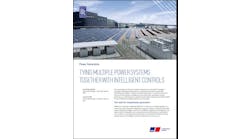February 1, 2012
NewScientist’s January 28 issue is likely to unsettle clean energy advocates – but it is worth the read.
The cover article, “Power paradox: Clean might not be green forever,” posits that even renewable energy can warm the planet, and eventually change climate, if we continue to ratchet up power production to serve our ever increasing demand for electricity.
It turns out that wind farms create heat, albeit a miniscule amount compared with fossil fuels or nuclear power, according to the article. Research from the University of Illinois in Urbana-Champaign indicates that wind turbines heat the ground nearby at night, apparently caused by the turbines sucking air downward from above.
Solar panels, too, create unintended heat. The article points to a study that indicates building a 1-TW solar power plant in California’s Mojave desert could raise temperatures in the air by 0.4 degrees Celsius. When dark solar panels cover light-colored sand, they warm the air and change temperature and wind patterns within a 300-kilometer radius, the article says.
Energy almost always creates some sort of waste heat, even in powering our cell phones and computers, says Eric Chaisson of the Harvard Smithsonian Center for Astrophysics, in the article. Electricity heats the circuits. We don’t use this heat; it dissipates into the air.
Of course, this is one of those glass half-full or half-empty issues. Heat by-products are not bad thing if we make use of them. Farmers already take advantage of the localized warming caused by wind turbines to fight frost, says the article. And while solar panels may generate heat when they cover light-colored surfaces, like sand, they cool when placed over dark surfaces, like a black roof.
More importantly, we can sometimes use recycled heat instead of fossil fuels. Residential solar panels are now available that convert waste heat from the panels into useful energy for cooling a house. And for many years we’ve captured and used waste heat in buildings and factories through combined heat and power (CHP) and recycled industrial waste heat systems.
Plenty of need exists to channel heat energy for useful purposes, including air conditioning in the US, as our aging population continues to shift southward. Globally, about 47% of the energy we consume goes toward heating/cooling, with industry as the largest single user, consuming about 43%. Homes follow at 41%, then commercial and public buildings, 9% and agriculture 6%, according to the International Energy Agency.
Should we worry that renewables generate heat? Perhaps. But the impact is small. Heat from renewables poses no immediate threat. Long term, however, waste heat from all sources could become a serious contributor to climate warming, if we continue to increase our consumption of electricity at the current rate of about two percent annually, the article says.
So clearly, it would be hard to take any argument against renewable energy seriously based on its heat output – particularly since renewables can displace fossil fuels that create far more warming. But the findings do underscore the value of exploring energy efficiency measures that make use of waste heat. We hear a lot about smart power; but stay tuned as smart heat rises up as a new priority.
Elisa Wood is a long-time energy writer whose articles can be found at www.RealEnergyWriters.com.






